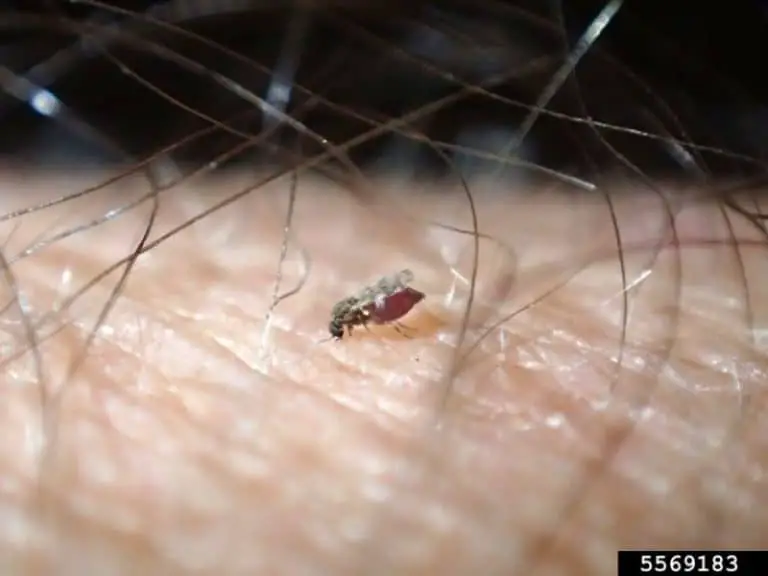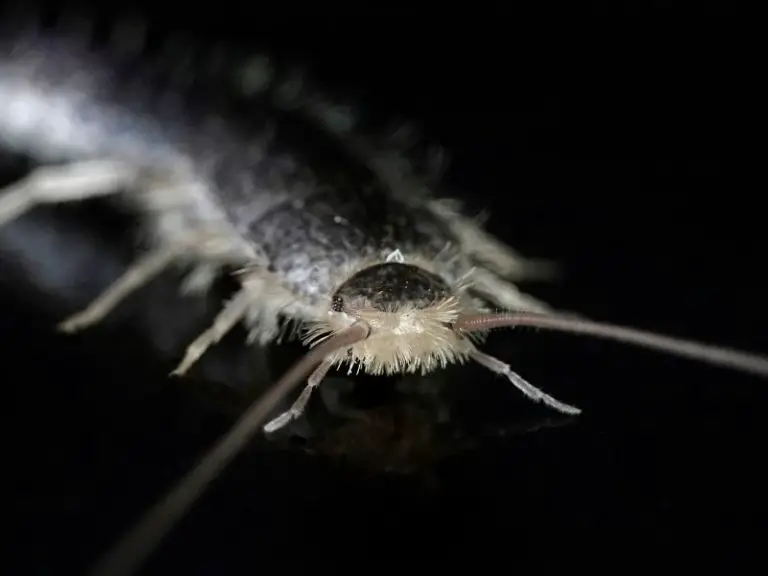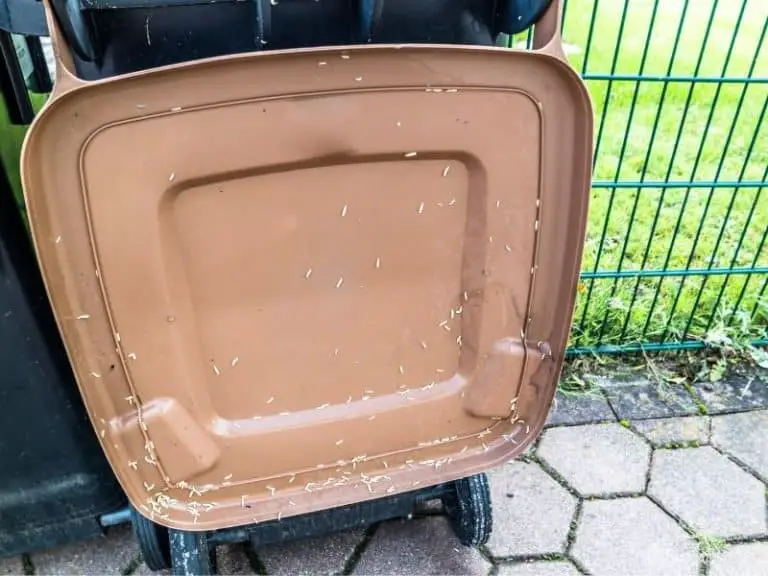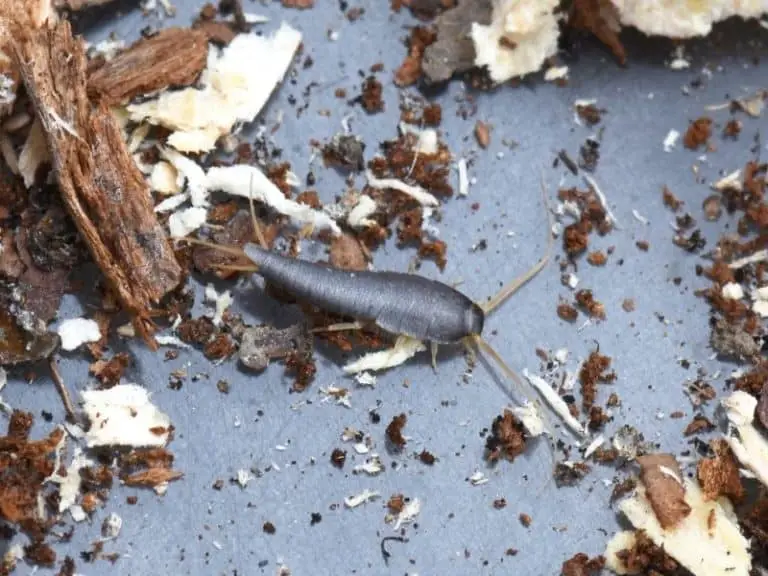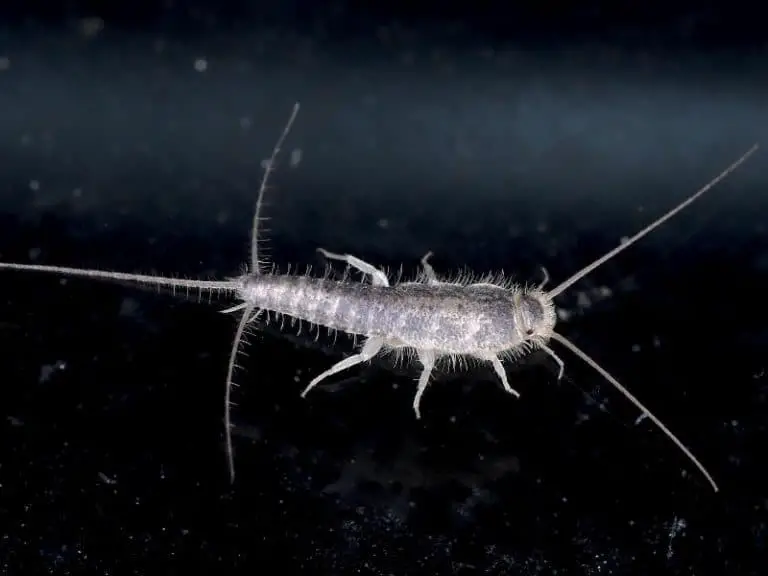What Causes Silverfish Infestation And How To Get Rid of Them
Like many common household pests, silverfish can be more problematic in the springtime when the temperatures start to rise. However, if the indoor conditions are right, silverfish can invade your home and damage many of your belongings, including priceless ones, at any time. The key is to know how silverfish get into your house in the first place.
A silverfish infestation is usually caused by plenty of moisture in the home because they are attracted to damp places. Water leaks and clutter make it easier for them to survive. A silverfish infestation can also start from the introduction into the home of silverfish hiding in secondhand or grocery items.
Silverfish are common pests to have in your home.
The right environment and availability of food (books, documents, clothes, carpets, pantry items, etc.) make it trouble-free for silverfish to thrive and multiply.
They may not be longer than 12 to 19 millimeters alright. However, these small creatures can destroy many of your belongings big time!
Below are some of the most important matters you need to know about a silverfish infestation.
5 Causes of Silverfish Infestation
Many of the things that silverfish need to thrive can be found in most homes — yours included.
Due to this, it is very much possible for you to face a silverfish infestation one way or the other, sooner or later. Whether there is an ongoing infestation or not, knowing the various causes of the problem is a must.
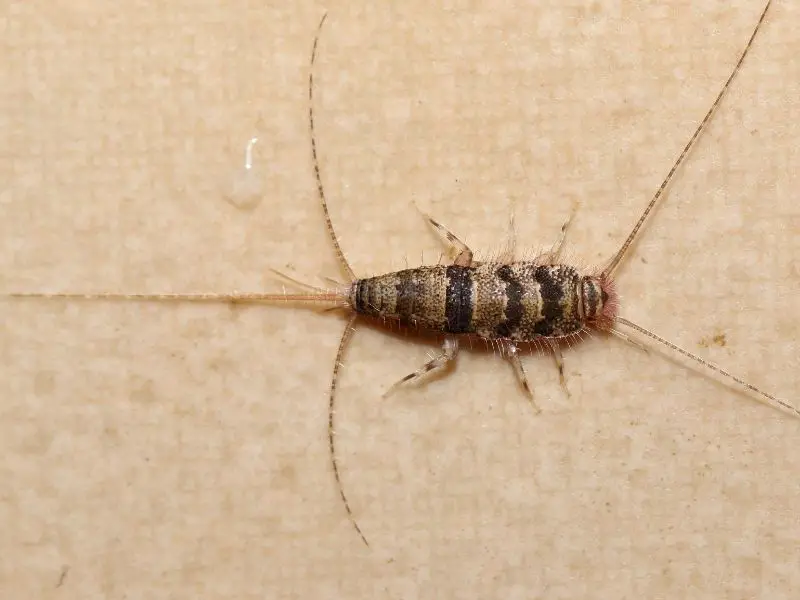
Food and Water
Common household pests infest homes because they find it easier to have access to food and water, two of their basic needs, indoors than outdoors. This is true in winter, where food tends to be scarce.
Your home is attractive to silverfish because it has everything that silverfish love to eat. They range anywhere from books, clothes, carpets, insulation materials to dry pet food.
Silverfish also love snacking on pantry items. Eating food contaminated with or has silverfish won’t endanger your health alright.
But it’s very disgusting.
Many of the things that silverfish prefer to eat the most are belongings that are priceless and irreplaceable. Some common examples are photographs and artworks.
Silverfish also eat hair and skin flakes on the scalp.
So, if you have dandruff, put it under control ASAP!
Moisture, Warmth and Darkness
The presence of food and water is not enough to cause a silverfish infestation to come into being.
The environment also needs to be ideal for silverfish to survive. When it comes to picking the perfect home to invade, silverfish look for three very important things.
They are:
- Moisture. It’s for this reason why bathrooms tend to attract lots of silverfish.
- Warmth. Silverfish hate the cold. They prefer to live where the temperature ranges from 70°F to 90°F, which means they like a little heat. However, silverfish can survive temperatures below 50°F.
- Darkness. Being nocturnal animals, silverfish like to stay where there is little to no light available.
Do you have a silverfish infestation and want to get rid of those scaly critters through the DIY way? You can increase your success rate by focusing on areas of your home that are moist, warm and dark.
Water Leaks or Floods
Just because you do not live where it’s hot and humid doesn’t mean that you should not worry about silverfish that are hooked on excess moisture.
Failure to keep your home in tip-top shape can invite silverfish to live in it.
For instance, a leaky pipe can cause water to be present where it should not exist.
This can make the area so favorable for silverfish. Improper floor or wall sealing and a leaky gutter can cause floods, too, leading to increased moisture levels.
Needless to say, it will make your home more delightful for silverfish.
Besides silverfish, water leaks or floods can also attract other common household pests. Some of them are centipedes, cockroaches and ants. Unnecessary moisture can also cause mold and mildew to form.
Lack of Cleanliness
Many common household pests thrive so much better in dirty and messy homes. That’s because there are plenty of hiding and mating places available for them.
What’s more, scraps of food and beverage and sauce stains allow pests to enjoy their meals without the need to exert a lot of effort.
Silverfish are some critters that are attracted to filthy homes — it makes keeping their tummies full easier.
The importance of keeping your home clean and clutter-free after dealing with a silverfish infestation cannot be stressed enough. Otherwise, it is very much likely for you to go through the same problem again.
Secondhand Transmission
In some instances, a silverfish infestation can start without some silverfish crawling inside the home to feed, mate and nest.
There are cases where the problem can be due to the unintentional introduction of silverfish into the home.
Buying secondhand books, artworks, sofas and other items infested with silverfish without your knowledge can welcome some silverfish into your life.
Once inside your home, silverfish will have no problem feeding on and nesting in your belongings. Shopping from a questionable grocery store can also cause silverfish transmission.
It doesn’t take a lot of silverfish for a serious silverfish infestation to happen because these pests multiply fast.
For instance, one female silverfish can lay two to three clusters of eggs per day, and each cluster can have up to 20 eggs!
The takeaway: A silverfish infestation can be due to many things. Allowing a couple of silverfish into your home is enough for a serious silverfish infestation to start.
That’s because they can grow in numbers fast. And because silverfish can live up to eight years, failure to deal with them can leave you with a headache for a very long time.
How to Get Rid of Silverfish
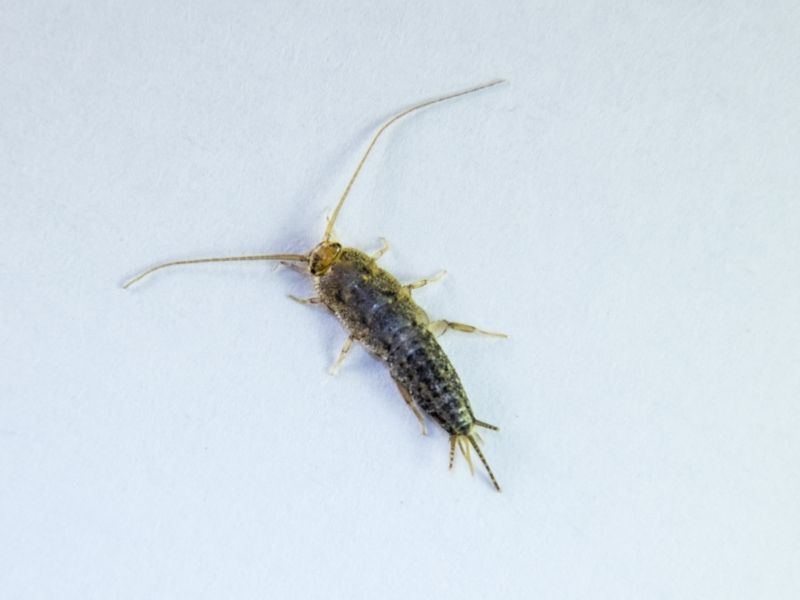
No matter the common household pest causing mayhem on your home and indoor living, it is of utmost importance that you deal with the problem as soon as you learn about its presence.
This can keep pests multiplying further and causing more damage to your property and belongings.
When it comes to getting rid of pests, you got two options:
- Get in touch with a local pest control company. Allowing the experts to spring into action is an effective way to solve the infestation with as little to no complications as possible. Alas, professional extermination doesn’t come free of charge. Most of the time, it doesn’t come cheap, too.
- Deal with the infestation via home remedies. Many homeowners who wish to save money opt for the DIY approach because it is cheaper. Most of the time, the products or ingredients needed are already in their homes, usually in their kitchens. Sadly, for a serious infestation, home remedies may fail to impress.
Each option comes with its own set of pros and cons.
When choosing which approach is best for the situation, consider certain things. They include the pest involved, level of infestation, damage caused, and available budget.
Although it is important that you think things over, you should come up with a decision before the problem gets out of hand.
If you prefer to get rid of a silverfish infestation with your own two hands, there are many steps that you may take. But first, let us answer some important questions related to eliminating silverfish via the DIY way…
Here are the things you may try to have a silverfish-free home…
Sprinkle Diatomaceous Earth
Many small insects die upon contact with diatomaceous earth. They include silverfish. This is why you may count on it if you want to eliminate silverfish from your home without professional help.
It may sound like it contains some potent and toxic ingredients.
However, diatomaceous earth is 100% natural.
It is made from the fossilized shells of diatoms, which are single-celled organisms living in lakes, rivers, and other bodies of water. Diatomaceous earth works by dehydrating silverfish until they breathe their last.
Something as simple as sprinkling diatomaceous earth on hotspots is enough to help you put a silverfish infestation under control.
However, avoid sprinkling it in wet places. That’s because diatomaceous earth stops working when moist.
Online, you can get your hands on diatomaceous earth trouble-free. Here are some of the best-sellers:
DiatomaceousEarth DE10

Because it’s 100% pure diatomaceous earth and listed with the Organic Minerals Research Institute (OMRI), too, it doesn’t come as a surprise why Diatomaceous Earth.com Food Grade Diatomaceous Earth sells like hotcakes.
Primarily, the product is for dealing with high cholesterol levels and constipation. It is also for improving the health of the skin, nails and hair. But if your home has silverfish, you may rely on it to get rid of those pests.
For best results, sprinkle generous amounts of Diatomaceous Earth.com Food Grade Diatomaceous Earth where you see silverfish.
Harris Food-Grade Diatomaceous Earth

Like the product above, Harris Food-Grade Diatomaceous Earth is also pure and organic. However, what makes it a standout is that its plastic container has a puffer tip for trouble-free application.
What’s really nice about this product (and other all-natural diatomaceous earth brands, too) is that it’s safe for use inside and outside the home.
In some instances, silverfish may infest gardens. Harris Food-Grade Diatomaceous Earth may be used to get rid of silverfish in garden pots and boxes without harming plants and the environment.
Just a word of caution: Food-grade diatomaceous earth is non-toxic to humans and pests. However, consider using another solution for silverfish if you have an indoor cat or dog.
That’s because they may inhale large amounts of diatomaceous earth by accident, which can irritate their airways and lungs.
Try Epsom Salt
Besides diatomaceous earth, you may also try Epsom salt. It works in the same fashion — Epsom salt dehydrates silverfish until they can survive no more.
With regular application, you can put a silverfish infestation under control.
Epsom salt is the perfect alternative to diatomaceous earth as a silverfish natural killer if you have a pet.
The worst thing that could happen to your cat or dog is diarrhea since Epsom salt has a laxative effect. However, this should be the least of your worries since Epsom salt is unpalatable to pets as it’s quite bitter.
But just like diatomaceous earth, Epsom salt works best if it’s kept dry. This is why you should use it in combination with other all-natural remedies for a silverfish infestation.
Install Glue Traps
If you are on the hunt for a tip on how to stop silverfish from eating clothes and other belongings of yours, look no further. One of the best ways on how to stop silverfish on their tracks is by installing glue traps.
Also known as “glue boards”, glue traps are small boards coated with an adhesive. They are designed to trap crawling and even flying insects.
Most of the time, glue traps are meant for installation in the kitchen and pantry since they do not have toxic chemicals. Glue traps are effective against common household pests that snack on your food.
Most glue traps in the market are for beetles and moths. Worry not because they are also very good for trapping silverfish. As a matter of fact, they are excellent at trapping just about any small insects.
To make glue traps your ultimate silverfish extermination tools, place bits of bread in the center of each sticky board. This will attract silverfish to crawl through them.
But be warned: baiting glue traps with bread can cause other pests to get trapped, too, which is a good thing if you want a pest-free home.
Let’s check out two of the top-selling glue traps on the internet:
Trapper Monitor & Insect Glue Traps

If your home has a serious silverfish infestation, get your hands on Trapper Monitor & Insect Glue Traps.
Purchase includes a total of 90 glue traps, thus allowing you to catch silverfish in various nesting places.
One of the nicest things about this product is that it’s customizable. Each one can serve as one massive glue trap or three smaller glue traps.
All you need to do is separate the board along the perforated lines. Trapper Monitor & Insect Glue Traps have windows on both sides, too, allowing you to keep track of your DIY silverfish extermination’s progress.
Dr. Killigan’s Pantry Moth Traps

Fret not that Dr. Killigan’s Pantry Moth Traps is being marketed for trapping moths.
That’s because it is also effective for trapping silverfish. The product works on many other crawling and flying common household pests, too.
This is the glue trap to go for if you like to eliminate silverfish in style. Each glue trap (a purchase includes six glue traps) comes with an elegant design that makes it look great in the bathroom, bedroom, kitchen, pantry and others.
Dr. Killigan’s Pantry Moth Traps also have pheromones that can entice silverfish and other critters to crawl on them.
Just a word of caution: The boards with an adhesive are covered. Still, it’s possible for the paws of your cat or dog to get stuck to them. Prevent complications from striking by installing glue traps where your pet cannot reach them.
Use Cedar Shavings or Oil
Keeping silverfish from coming back is just as important as killing them. It’s because of this why you should also include silverfish repellents in your arsenal of weapons.
As the name says, repellents work by fending off silverfish. They are effective for protecting some of your belongings from silverfish and preventing an infestation.
Some of the most impressive silverfish repellents out there are cedar shavings. Silverfish cannot stand the way cedar shavings smell. Other insects that cedar shavings can repel include:
- Bed bugs
- Carpet beetles
- Moths
- Cockroaches
- Ants
To keep some nooks, crannies and spaces off-limits to silverfish, all you have to do is sprinkle some cedar shavings on them. Just remember to replace them with fresh cedar shavings every three to six months for best results.
While effective for driving silverfish away, cedar shavings can cause quite a mess. Fret not because you can also count on cedar chips or blocks, which are less likely to get dispersed than cedar shavings.
You may also use cedar oil instead, which you can apply by spraying or wiping on silverfish-prone areas.
Spray Lavender Essential Oil
Lavender essential oil is effective for reducing stress, relieving anxiety and promoting a good night’s sleep.
However, for silverfish, the lavender essential oil is bothersome. Its smell drives away those scaly and shiny pests.
It’s because of this why lavender essential oil is one of the most effective all-natural remedies for silverfish. It cannot kill them alright.
However, it can keep them from wreaking havoc on your belongings and life, too. The best lavender essential oil for silverfish prevention is the kind that’s 100% pure and therapeutic grade.
Spraying lavender essential oil in the bathroom is great not only for repelling silverfish but also making the area smell nice. On the other hand, using it in the bedroom can help fend off both silverfish and insomnia.
Pure lavender essential oil is non-toxic. This is why you may spray it in the pantry and kitchen to keep silverfish at bay. Just make sure that you use it sparingly near food items.
That’s because it can affect the way your meals smell and taste. Besides spraying, you can also use lavender essential oil by diffusing it with a diffuser or burner.
Switch on a Dehumidifier
It was mentioned earlier that one of the things that attract silverfish to homes is moisture.
Needless to say, keeping the moisture levels inside your home less ideal for silverfish can help put the infestation to an end. It can also help keep another silverfish infestation from striking.
First things first: If leaky pipes or gutters and poor drainage are the causes of excess moisture indoors, get them fixed. Then you may start counting on some cheap and effective ways to absorb excess moisture. Something that works each time is placing a bowl of charcoal, baking soda or chalk in the room where there’s plenty of moisture.
But if you are serious about dealing with silverfish, use a dehumidifier. This is true during summer when it’s hot and humid. As the name suggests, a dehumidifier is an appliance that removes moisture from indoor air.
Online, there are so many dehumidifiers to choose from. Here are some of those worth your attention:
Alrocket 35-Ounce Dehumidifier

It’s true that silverfish can infest just about any area of the home. However, it’s rare for them to infest the entire home at the same time — silverfish prefer damp and dark environments only.
This is when the benefit of having the Alrocket 35-Ounce Dehumidifier comes in. Its compact body makes it easy to take it from room to room.
The dehumidifier has a 35-ounce tank capacity. Per day, it can collect up to 60 ounces of water in the air inside your home. Because of its quiet motor, the Alrocket 35-Ounce Dehumidifier is great for a 260-square-foot bedroom.
Lonove 27-Ounce Portable Dehumidifier

Installing a massive dehumidifier in a 165-square-foot room or smaller is a waste of energy. If the infested area is rather small, consider counting on the Lonove 27-Ounce Portable Dehumidifier.
Weighing less than three pounds only, you can take the dehumidifier where it’s needed the most without any trouble.
Despite being small, the Lonove 27-Ounce Portable Dehumidifier can remove up to 12 ounces of water a day as it has two air inlets.
It’s not just space that it saves but electricity, too. That’s because it has auto start and shut-off features.
Ask Termite Pest Control Company to Fumigate
Fumigation kills silverfish. It is rare for pest control companies to offer silverfish fumigation service. However, those that offer termite fumigation can fumigate silverfish, too. Unfortunately, fumigation to kill silverfish requires evacuation of the home for the duration of the treatment.
Fumigation can help put a silverfish infestation to an end alright. However, it’s not the most practical choice.
Apply Heat Treatment
Silverfish cannot stand high temperatures. This is why heat treatment can help put an end to a silverfish infestation. One treatment is more than enough to kill both adult and larvae silverfish as well as the eggs. Dry, hot air is more effective than direct heat as silverfish can hide very well.
Heat treatment doesn’t come cheap. It can cost anywhere from $300 t0 $2,500. The overall price of heat treatment will depend on different factors. They include the size of the home and the level of the silverfish infestation.
Use All Natural Insecticides
Many insecticides are effective for dealing with a silverfish infestation. Some are natural, and they can be either bought at hardware or home improvement stores or made in the kitchen. Others have chemicals that may cause complications, which is why their use is best left in the hands of the pros.
If you are planning to control a silverfish infestation on your own, consider using all-natural insecticides.
Now that those silverfish extermination-related questions have been answered, it is time to discuss some of the most effective ways to get rid of silverfish.
If you want to free your home of a silverfish infestation without contacting a local pest control company, it is a good idea to opt for steps that are proven effective.
Frequently Asked Questions (FAQs)
When it comes to ridding your home of common household pests with your own two hands, it’s a good idea to get to know your enemy first.
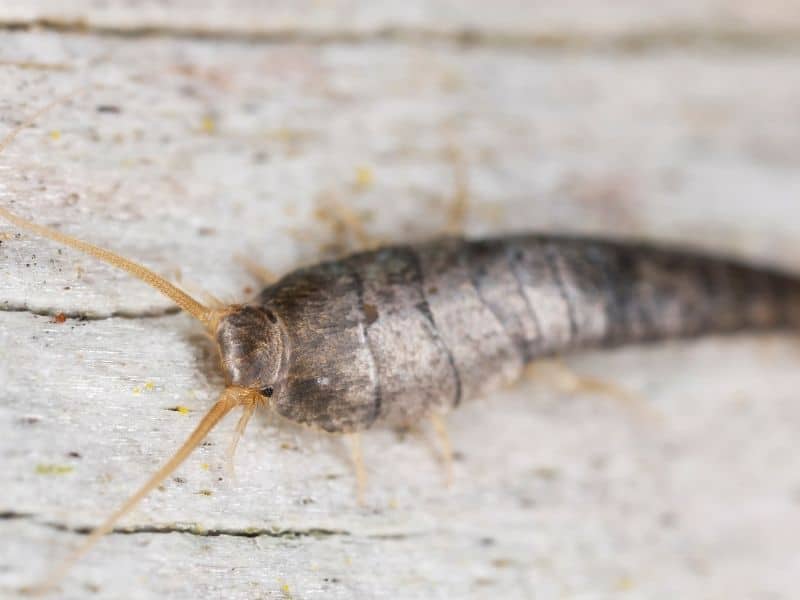
Not getting yourself acquainted with silverfish before you attempt to get rid of them is like trying to cook a complicated pasta dish for the very first time without a recipe.
To increase your success rate, make sure that you learn about silverfish as much as you can before springing into action. Otherwise, you may end up wasting both time and money.
Here are some pressing silverfish-related questions that you may want to be answered but are too shy to ask:
Where do silverfish come from?
Silverfish come from outside the home. They end up inside the home, where there is plenty of food to eat and nesting places available. In some instances, silverfish do not have to go to great lengths just to get indoors. There are cases where they are introduced inside the home by people or objects.
Like other common household pests, silverfish can be introduced into your home without your knowledge!
What are silverfish attracted to?
If it’s essential for survival, silverfish are attracted to it. Leading the list are food and water. The environment has to be ideal, too. It should have the right levels of moisture and temperature. Silverfish do not like the light. This is why they are nocturnal insects that stay where it’s dark.
Later, we will talk more about the things that draw silverfish to your home. So don’t stop reading now.
Where do silverfish like to get in your house?
Silverfish can get just about anywhere in the house. They can be found in the attic and basement. Silverfish can also be found in the garage, bathroom, living room and kitchen. Silverfish also like to stay in the pantry where the conditions are right and there is plenty of food for them to eat.
Needless to say, almost any part of your home can be infested with silverfish.
What causes silverfish in bathrooms?
Moisture — it’s what makes silverfish attracted to bathrooms first and foremost. Silverfish thrive better in damp places, and there are lots of damp nooks and crannies in bathrooms. Moisture is also the reason why it is a terrible idea to leave damp clothes, towels and rugs on the bathroom floor.
If your bathroom has poor ventilation, it is very much possible for it to harbor lots of silverfish.
Now that these questions have been answered and are out of the way, it’s time to talk about the causes of a silverfish infestation.
Having an idea of what they are is essential whether you need to get rid of silverfish or you want to keep them from invading your home and wreaking havoc on your belongings.
Do silverfish have eggs?
Silverfish have eggs but are difficult to see since they are laid in cracks and crevices where there’s very little to no light. Female silverfish can lay up to three clusters of eggs per day, each one having up to 20 eggs. Silverfish multiply fast because female ones can lay eggs all year round.
The eggs of silverfish can take a while to hatch — they can hatch anywhere from 19 to 32 days.
What do silverfish larvae look like?
Silverfish larvae look the same as adult silverfish. They also have carrot-shaped bodies with scales. They have antennas on their heads and tails, too. However, young silverfish are smaller than adult ones. The diet of silverfish larvae is the same as the diet of adult silverfish.
Unlike some common household pests, young silverfish can be dealt with in the same ways as adult silverfish.
How fast are silverfish?
Despite their size, silverfish are fast common household pests. As a matter of fact, they are known to crawl or run faster than centipedes and some species of spiders. Silverfish are good jumpers, too. They can jump up to two feet in the air. However, silverfish are bad at climbing smooth surfaces.
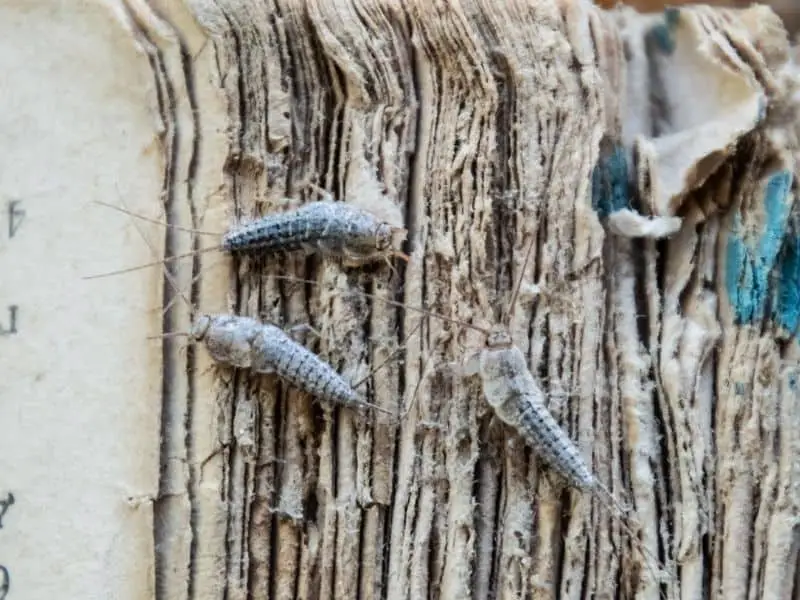
Silverfish are often mistaken for scurrying small cockroaches when the kitchen light is switched on at night.
Is a silverfish a centipede?
Some people may mistake silverfish for centipedes. That’s because it looks like silverfish have plenty of legs. However, silverfish have six legs only. The antennas on their heads and tails can be mistaken for legs. The legs of centipedes are longer than silverfish legs. They have more legs, too.
Many common household pests look like silverfish. Some of them are booklice, bristletails, fire bats and earwigs.
Silverfish vs. earwigs: what are the differences?
Silverfish and earwigs are the same sizes. However, silverfish have wider top halves while earwigs have wider bottom halves. Silverfish are silver and scaly, while earwigs are brown and shiny. Silverfish have three antennas on their tails. On the other hand, earwigs have two pincer-like appendages.
Silverfish prefer to eat paper, fabrics and pantry foods. Earwigs prefer to eat decaying organic matter.
Takeaway
It’s not that difficult for a silverfish infestation to happen. Provided that there is plenty of food and moisture and very little to no light, it is very much possible for silverfish to thrive and multiply.
The good news is that dealing with a silverfish infestation is possible even without contacting a local pest control company. Many home remedies for silverfish exist. Similarly, many products for getting rid of them are sold online. When getting rid of silverfish through the DIY approach, having patience and consistency matters.
Eliminating silverfish is not enough. It’s also important to take the steps necessary to keep them from coming back. Water leaks and floods should be fixed to prevent excessive moisture. Keeping the home clean is a must, too.
Photo credit: ©canva.com
Medical Disclaimer: TheHomePestControl is a digital publisher and does not offer personal health or medical advice. The contents of this website are not intended to substitute for professional medical advice, diagnosis, or treatment.
Affiliate Disclaimer: As an Amazon Associate, I earn from qualifying purchases made on our website. If you make a purchase through links from this website, I may earn a commission at no additional cost to you.

